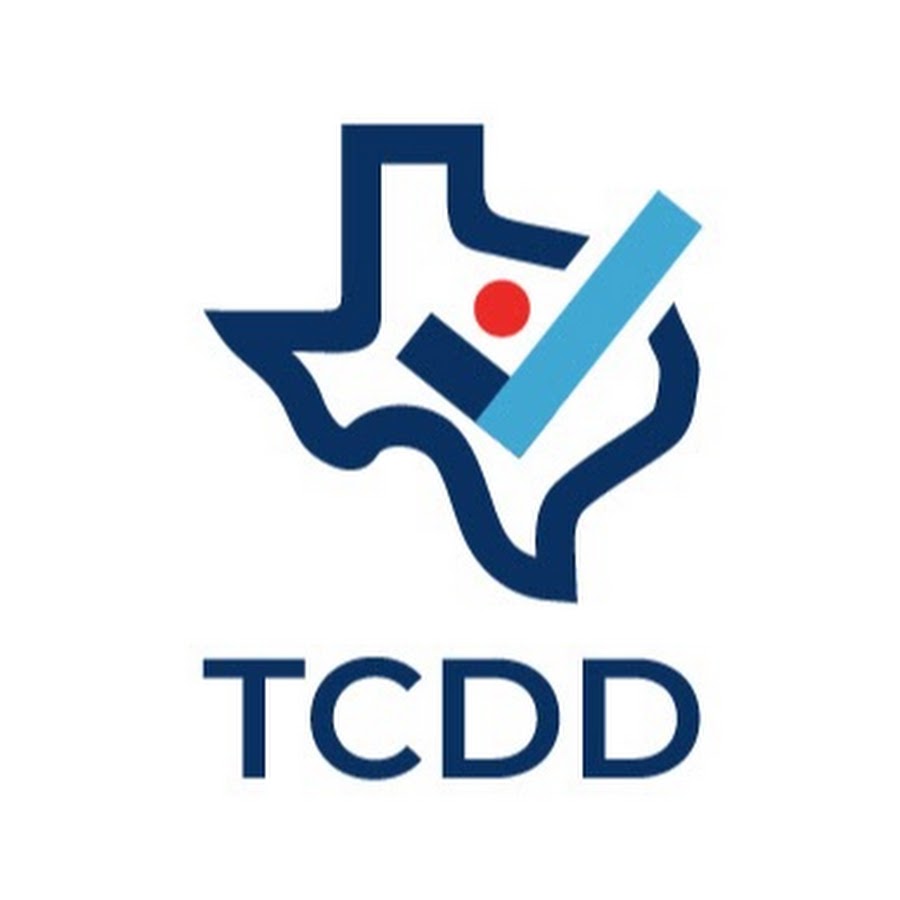
Behavior Analysis for Inclusive Physical Exams
Through a grant from the Texas Council for Developmental Disabilities, the University of Houston-Clear Lake has developed training for healthcare students and professionals.
During the training, participants learn how to use basic behavioral interventions during physical examinations so they can better accommodate patients diagnosed with developmental disabilities.
You are free to use our training materials as long as you cite this site as your source. In addition, we will gladly train healthcare students and professionals for free! If you would like to schedule a training, please contact Robert Lehardy.
Training Materials:
- Electronic Reference Booklet
- Electronic Visual Support
- New Patient Information Form
- Printable Reference Booklet, with Instructions
- Tutorial to Further Break Down Difficult Exam Steps
- Printable Visual Supports:
Supplemental Resources:
If you would like to learn more about the training program, please watch our 2025 presentation for the Texas Autism Conference. In it, we describe health-related challenges faced by patients with developmental disabilities, summarize research to help patients face those challenges, and explain how healthcare professionals, caregivers, and self-advocates can use and benefit from this training.
Physicians and Social Workers also can learn about this training program and earn 1 hour of continuing education by registering to view our 2024 presentation for Baylor College of Medicine.
Training Modalities:
We designed this training to be easy to implement and highly scalable. Consider the following modalities and expand each to learn more.
I am an individual who wants this training in-person, with practice.
In-Person Training with Practice
- If you live in the Houston, Texas area, contact Robert Lehardy to schedule an in-person training. This is our preferred way to train individuals.
- The training takes about one hour to complete and includes practice to use the behavioral
interventions during a mock physical examination.
- We will travel to your preferred site to provide the training.
- The training takes about one hour to complete and includes practice to use the behavioral
interventions during a mock physical examination.
I am an individual who wants this training via video-conferencing, with practice.
Video-Conference Training with Practice
- This is our second-most preferred way to train individuals.
- This training takes less than one hour to complete and includes practice to use the
behavioral interventions during a mock physical examination.
- To practice, you must independently obtain the following materials:
- A laptop computer or tablet that supports video-conferencing software
- One stethoscope or an item that could be imagined to represent one
- One otoscope or one ophthalmoscope or an item that could be imagined to represent both items
- Print the Premade 1 visual support in color, double sided
- Create the Printable Reference Booklet by following the instructions in the downloaded file -OR- obtain a phone or tablet on which you can view the Electronic Reference Booklet
- One inexpensive item that can be easily held in your hand, such as a stress ball, fidget spinner, or similar item
- 10 coins of the same denomination, such as pennies, nickels, dimes, quarters, or similar
- After you have assembled the required materials, contact Robert Lehardy to schedule the training.
- This training takes less than one hour to complete and includes practice to use the
behavioral interventions during a mock physical examination.
I am an individual who wants this training, but I do not want to practice.
View the Training without Practicing
- If you do not wish to practice using the behavioral interventions, follow the steps
below to view the training and complete a brief knowledge evaluation.
- This training takes approximately 30 minutes to complete.
- Please follow the video instructions to complete the pre- and post-training surveys
of confidence and knowledge. These surveys provide valuable data that we use to improve
the training.
- Click here to view the training.
- This training takes approximately 30 minutes to complete.
I would like UHCL staff to train my group of three or more people.
In-Person Training, Provided by Us
- Our preferred way to train groups is in-person, provided by us. However, we only have funding to provide in-person
training in the Houston, Texas area. If you would like us to train your group, please
contact Robert Lehardy.
- This training takes between 60-90 minutes to complete and includes practice using
the behavioral interventions during mock physical examinations.
- We will travel to your preferred site to provide the training.
- The training is delivered to small groups of 3-4 participants. Multiple groups can
be trained at the same time.
- If you require training for more than 10 groups at the same time (i.e., 40 or more people), we may ask you to provide extra personnel from your site to help us with the training. Very large groups also require a large space for participants to view the training together and then split into groups to practice.
- This training takes between 60-90 minutes to complete and includes practice using
the behavioral interventions during mock physical examinations.
I, myself, would like to train my group of three or more people.
In-Person Training, Provided by You
- To provide the training yourself, here are details for each training phase:
- Planning Phase:
- Identify how many people you will train and select an appropriately sized site with
audio/visual support.
- Pre-assign people to small groups; each small group can be as small as three people,
but the training is designed for groups of four people.
- For example, you want to train 20 med students. You should reserve a medium-sized room with enough space for five groups of four students to practice with at least 5-10 feet of space between groups. Each group should have access to a small table to place supplies.
- Identify how many people you will train and select an appropriately sized site with
audio/visual support.
- Materials Phase:
- Once you identify how many small groups are needed (e.g., five groups), obtain the
materials for each group to use during the practice phase. Each group requires all
of these materials:
- One stethoscope
- One otoscope that will also function as an ophthalmoscope, or vice versa
- One copy of the Premade 1 visual support in color, double sided, and laminated to enable repeated use
- Four laminated copies of the Printable Reference Booklet
- One inexpensive item that can be held in one's hand, such as a stress ball
- 10 smaller items, such as colored wooden cubes
- For example, to simultaneously train five groups, you need five stethoscopes, five otoscopes/ophthalmoscopes, five copies of the Premade 1 visual support, 20 copies of the Printable Reference Booklet (one for each person to use during the training and to keep afterward), five stress balls, and 50 colored wooden cubes.
- Once you identify how many small groups are needed (e.g., five groups), obtain the
materials for each group to use during the practice phase. Each group requires all
of these materials:
- Training Day - Video Phase:
- Assemble all trainees to watch the training video.
- We recommend that you enable closed captions (CC button).
- If your trainees are like the medical students and residents we've trained, they will probably prefer if you increase the playback speed to 1.15x (Settings cog -> Playback Speed -> Custom -> 1.15x).
- At the beginning of the video, we ask trainees to complete a pre-training survey of
demographics, confidence, and knowledge to help people with an intellectual or developmental
disability. Please pause the video at 00:54 seconds and then resume it after all trainees
have completed the survey. The survey typically takes less than five minutes to complete.
- During the first part of the video (00:54 to 14:13), trainees will learn basic behavioral
interventions to use during physical examinations.
- During the second part of the video (14:13 to 22:04), trainees will learn how to practice
the behavioral interventions in small groups. To summarize this process:
- Trainees will take turns role-playing as a doctor who practices the behavioral interventions, a patient who creates opportunities for the doctor to practice the behavioral interventions, or as evaluators who observe the doctor and record if they correctly used the behavioral interventions.
- Each role-play typically takes 2-3 minutes.
- After a doctor completes a role-play, the trainees switch roles. Practice continues until each trainee completes at least one role-play as a doctor.
- During the third part of the video (22:04 to 24:04), trainees will review the behavioral interventions and how to practice. Please pause the video at 24:04 and direct the trainees to form small groups to practice.
- Assemble all trainees to watch the training video.
- Training Day - Practice Phase:
- We recommend that you provide one facilitator to simultaneously supervise five groups.
The facilitator will distribute materials, answer questions, and ensure that trainees
stay on task. Facilitation requirements scale with group numbers (i.e., two facilitators
for 10 groups, five facilitators for 25 groups, etc.).
- Once trainees have formed into groups, the facilitator will provide training materials
to each group.
- In our experience, some trainees will have questions during the first role-play. Also,
all trainees will become comfortable to practice without help during subsequent role-plays.
- In our experience, most groups finish practicing in 8 - 15 minutes.
- As each group finishes practicing, the facilitator should direct the trainees to complete
the post-training survey of confidence and knowledge.
- A URL, QR code, and instructions to access the survey are depicted at 24:05 on the video.
- Or, on their device, trainees can click the link to "Take another survey" and then select "Take a POST-training survey".
- Or, trainees can scan the QR code on the front of their reference booklet and then select "Take a POST-training survey".
- Finally, remind trainees that they can keep the Printable Reference Booklet to refer to after the training.
- We recommend that you provide one facilitator to simultaneously supervise five groups.
The facilitator will distribute materials, answer questions, and ensure that trainees
stay on task. Facilitation requirements scale with group numbers (i.e., two facilitators
for 10 groups, five facilitators for 25 groups, etc.).
- Planning Phase:
This work is supported by the Texas Council for Developmental Disabilities through
a grant from the U.S. Administration for Community Living (ACL), Department of Health
and Human Services (HHS), Washington, D.C. 20201, with a 100% federal funding award
totaling $6,121,860. Council efforts are those of the grantee and do not necessarily
represent the official views of nor are endorsed by ACL, HHS, or the U.S. government.














